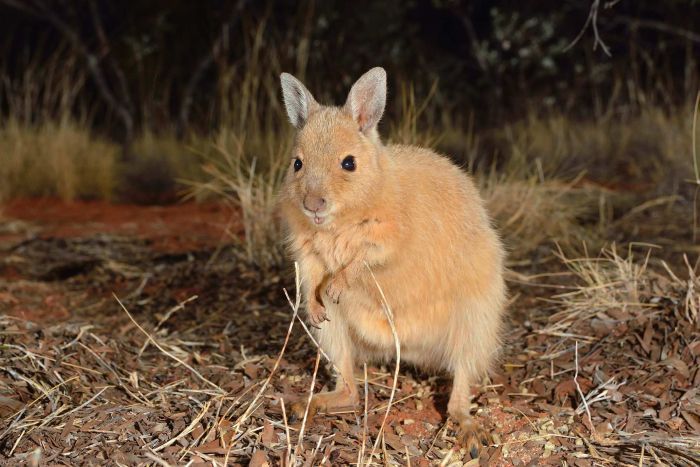Native Wallaby Brought Back From Brink of Extinction in the Red Centre
7.30 ABC News, Stephanie Zillman 18/07/2019
But now there is hope at the largest fully fenced wildlife sanctuary in the world at Newhaven Station, 300 kilometres outside of Alice Springs.
An ambitious conservation project is bringing native animals back from the brink of extinction.
The rufous hare-wallaby, known commonly as mala, hasn't been seen in the wilds of central Australia since the early 1990s, after falling victim to the feral cats and foxes that have decimated native animal populations.
In a project that has been more than a decade in the making, staff at Newhaven have released 30 healthy adult mala within the protected area.
They're just the first on a list of critically endangered species that will be reintroduced to the Central Desert.
Unfolding in two stages, the first 10,000 hectare area within the fence line was declared free of feral predators in December last year, thanks to the efforts of local Warlpiri rangers and two expert cat trappers, Christine Ellis-Michael and her mother Alice.
"There's about 10 to 20 species that will only survive in areas like we're establishing here at Newhaven, where are completely free of feral cats and foxes," Australian Wildlife Conservancy chief science officer Dr John Kanowski said.
"We want those animals back where they used to be — it's important for the environment, it's important for the species, it's important culturally, it's important for conservation."
The Australian Wildlife Conservancy said once stage two of Newhaven was complete, the site would be a feral-free area of up 100,000 hectares — twice the size of Manhattan, or all of Hong Kong.
Released mala a species many believed doomed
The last remaining mala at Newhaven had been scheduled for release since 2017.
After being caught from within their temporary home, they were assessed for their medical fitness, given a vitamin tonic and fitted with a radio tracking device.
The Newhaven team will be keeping a close eye on the mala, to make sure their plan is working.
"They'll actually be living in a space bigger than what their home range is, so in a sense it's their return to the wild," Newhaven manager Joe Schofield said.
Over the coming months, a further nine nationally threatened mammal species will be returned to Newhaven.
"We're in a situation now where the population can start to increase so significantly that we'll have numbers of this animal again in Australia that we haven't seen for decades."
Key Points
Newhaven Wildlife Sanctuary is home to the world's largest cat-proof fence
The native rufous hare-wallaby is the first species re-introduced
Once complete, the sanctuary will feature 100,000 hectares of feral-free land

Fighting ferals with … steel
The sheer number of feral cats that continue to be captured along the fence demonstrate the scale of the problem.
As she reached down to collect yet another feral cat from a trap, Ms Ellis-Michael said it was the 43rd cat rangers had retrieved from Newhaven over the past eight weeks.
According to AWC, a single feral cat will kill up to six native reptiles and mammals in a single night.
Cumulatively, feral cats kill almost six billion reptiles each year, and more than two billion birds.
It's for that reason, Dr Kanowski said, that native mammals could only be protected behind a steel fence.
"There is no technology that allows us to put these animals out safely into the landscape, so the fences are an interim step," he said.
"They might be an interim step for 10 years or 20 years, but they're critical for saving these species."